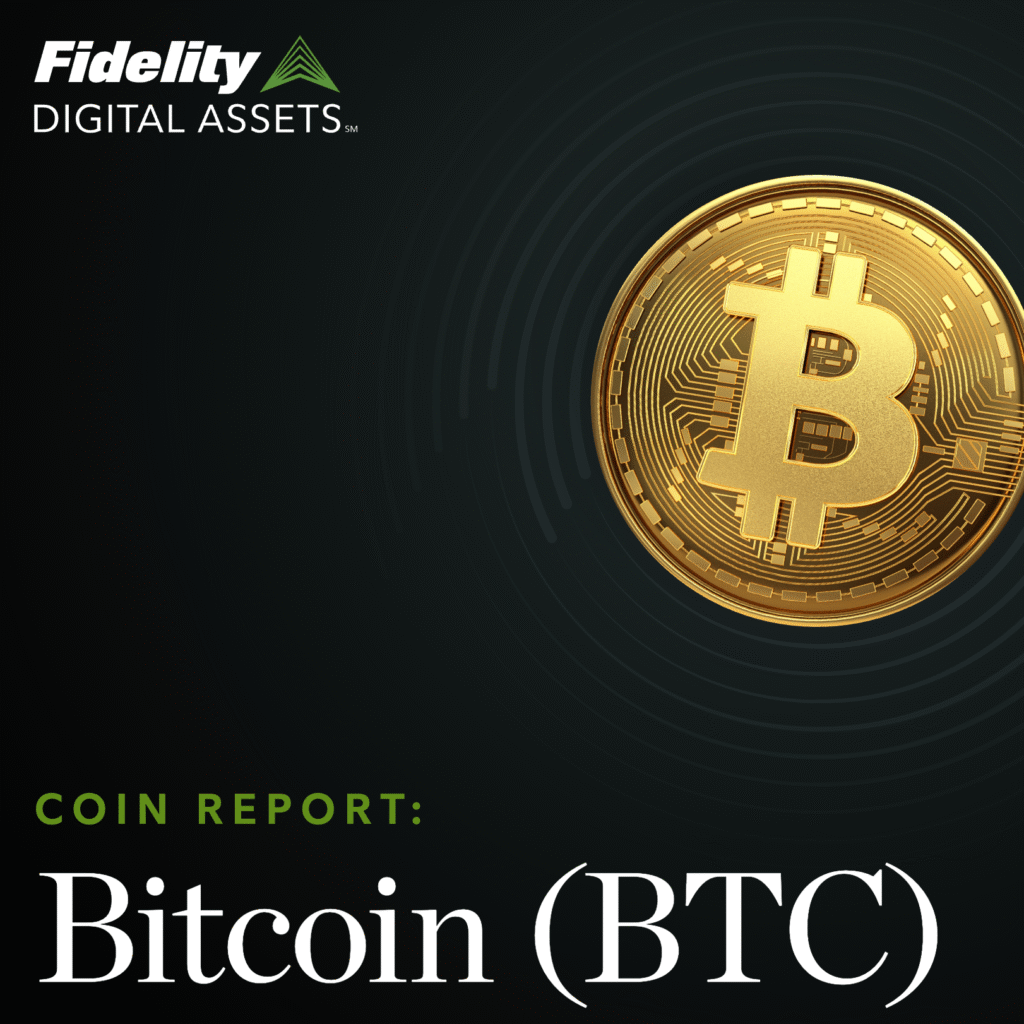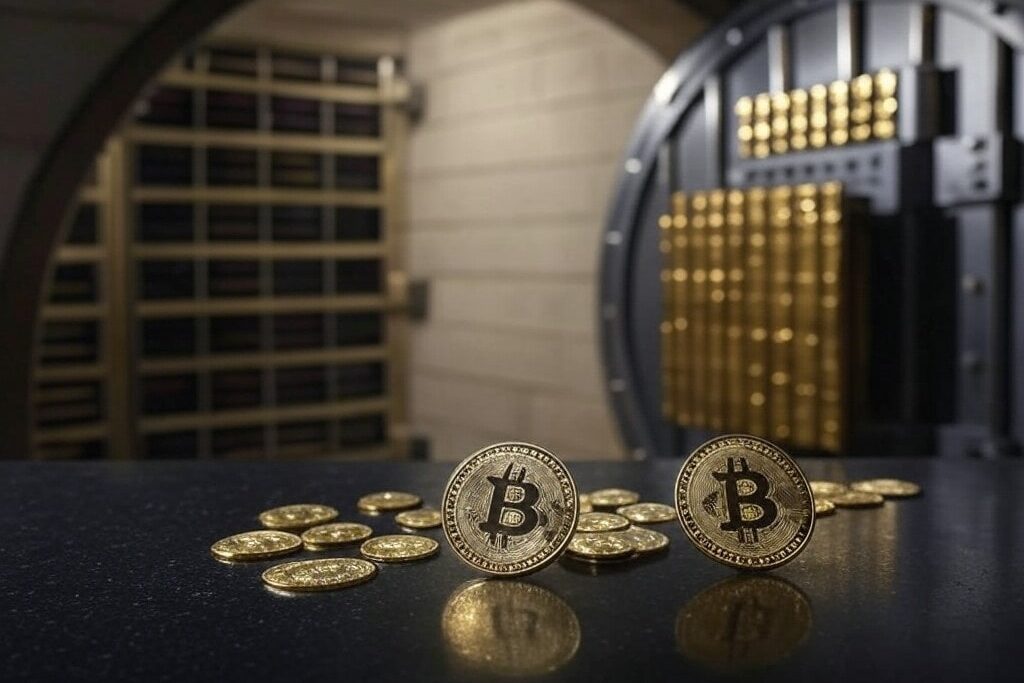
TL;DR
The Fidelity Digital Assets Bitcoin (BTC) Coin Report offers an in-depth analysis of Bitcoin as a monetary asset. It positions Bitcoin as the most secure, decentralized, and censorship-resistant digital asset with unmatched scarcity due to its hardcoded 21 million cap. The report argues that Bitcoin is unlikely to be replaced due to its first-mover advantage, robust network effects, and proven monetary properties. Despite volatility and scalability limitations, it remains the leading digital monetary good and a potential hedge against macroeconomic instability.
Detailed Summary
1. What Is Bitcoin?
Bitcoin is both a decentralized network and a native token. Launched in 2009, it introduced a revolutionary peer-to-peer electronic cash system, combining digital signatures with proof-of-work (PoW) to eliminate intermediaries and prevent double-spending.
2. Bitcoin’s Value Proposition
Bitcoin serves dual purposes: as a store of value and a medium of exchange. Its fixed supply, transparency, and neutrality make it appealing to individuals, institutions, and even nation-states.
3. Strengths
Bitcoin is the most decentralized and secure digital asset. Its issuance is programmatic and transparent. It is censorship-resistant and has emerged as a monetary good with characteristics such as scarcity, portability, verifiability, and durability.
4. Weaknesses
Bitcoin trades speed and complexity for security and decentralization. Its base layer is slower and more costly than newer chains. It has no cash flows and is inherently volatile.
5. Network Effects & Trilemma
Bitcoin benefits from strong network effects. Competing digital assets that attempt to optimize speed or scalability must compromise on decentralization or security—a dynamic known as the “Blockchain Trilemma.”
6. Halving & Supply
Bitcoin’s supply is capped at 21 million, and issuance is halved approximately every four years. Historical halvings have preceded major bull runs, due to reduced new supply and increasing demand.
7. Investment Thesis
Bitcoin is positioned as a macroeconomic hedge, offering protection against inflation and fiat currency debasement. It’s increasingly seen as “digital gold” and an alternative to hard commodities.
8. Valuation
Without cash flow, Bitcoin valuation depends on scarcity and network growth. Models like Metcalfe’s Law and S-curve adoption are applied to forecast price appreciation.
9. Risks
Risks include regulatory uncertainty, competition, protocol vulnerabilities, and potential investor apathy. Despite these, Bitcoin’s longevity and security make it a resilient asset.
Fidelity Digital Assets Report: Why Bitcoin Stands Alone
In a world reshaped by digitization and economic uncertainty, Bitcoin emerges not just as an alternative asset but as a paradigm shift in how we understand money. The Fidelity Digital Assets Coin Report delivers a robust defense of Bitcoin’s long-term value, utility, and staying power.
Bitcoin: Network vs. Asset
The report begins by clarifying the dual identity of Bitcoin: the capitalized “Bitcoin” refers to the network, while lowercase “bitcoin” refers to the native token. This decentralized protocol enables trustless peer-to-peer transactions without intermediaries—a revolutionary concept when launched in 2009.
Monetary Good in a Digital Age
Bitcoin fulfills essential monetary characteristics: it’s durable, divisible, fungible, portable, verifiable, scarce, and has a proven track record. As a programmable, finite, and global monetary good, it surpasses both fiat currency and gold in several dimensions, especially when viewed through a modern lens.
Enforceable Scarcity and Game Theory
With a hard cap of 21 million, Bitcoin’s scarcity is unmatched in the digital realm. Changing this cap would require broad consensus across a decentralized and incentive-aligned network, making such a change extremely unlikely.
The Halving Cycle and Supply Economics
Bitcoin’s issuance is halved every 210,000 blocks (~4 years). Historical data shows significant post-halving price increases, as supply-side shocks meet growing demand. The current inflation rate is under 1%, adding deflationary pressure over time.
The Blockchain Trilemma
Vitalik Buterin’s “Blockchain Trilemma” is used to explain why Bitcoin prioritizes decentralization and security over speed. It sacrifices transaction throughput (3–7 tx/s) compared to Visa (up to 9,000 tx/s), but this is a trade-off Fidelity sees as deliberate and beneficial.
Network Effects and the Lindy Advantage
Network effects are self-reinforcing. As more users hold and transact in bitcoin, its security improves via increased miner participation. This “virtuous cycle” compounds Bitcoin’s dominance, making replacement unlikely. Bitcoin’s 15+ year history also invokes the Lindy Effect: the longer it survives, the more likely it persists indefinitely.
Competitors: Ethereum and Litecoin
While Ethereum extends blockchain capabilities via smart contracts, it introduces complexity and risks. Litecoin attempted to be a faster Bitcoin clone but failed to capture network effects. Fidelity argues that neither asset offers the same pure monetary value proposition as Bitcoin.
Macroeconomic Hedge
Bitcoin is increasingly seen as a hedge against inflation and fiat currency debasement. As institutional investors seek store-of-value assets, Bitcoin’s scarcity and neutrality position it as “digital gold.” Its market cap has grown to nearly 10% of gold’s as of late 2024.
Valuation Models
With no cash flow, Bitcoin valuation relies on supply-demand models and network metrics like Metcalfe’s Law. Bitcoin’s current ~52 million unique wallets suggest it is still in early adoption stages. Historical halving patterns and user growth form the basis for bullish projections.
Risks and Roadmap
The report covers multiple risks: software bugs, evolving regulations, potential competitors, and investor apathy. However, Bitcoin’s “fair launch,” governance via Bitcoin Improvement Proposals (BIPs), and cautious roadmap provide a stable foundation. Proposed network upgrades prioritize security and decentralization.
Final Thoughts
The Fidelity report positions Bitcoin not just as an investment but as a generational innovation. Its unique blend of scarcity, decentralization, and resilience makes it the leading contender for digital money. While volatility and regulatory hurdles remain, Bitcoin’s trajectory suggests a durable role in the global financial system.
Disclosure: This article is for informational purposes only and does not constitute investment advice. Always consult a qualified financial advisor before making investment decisions.
